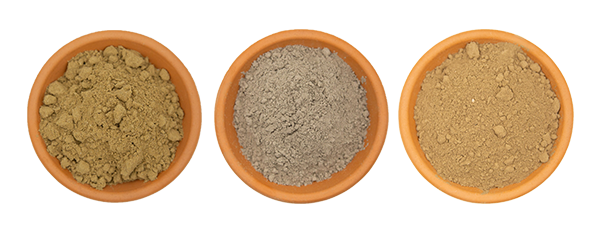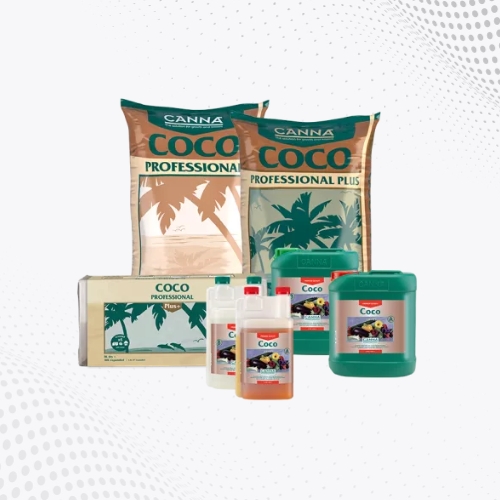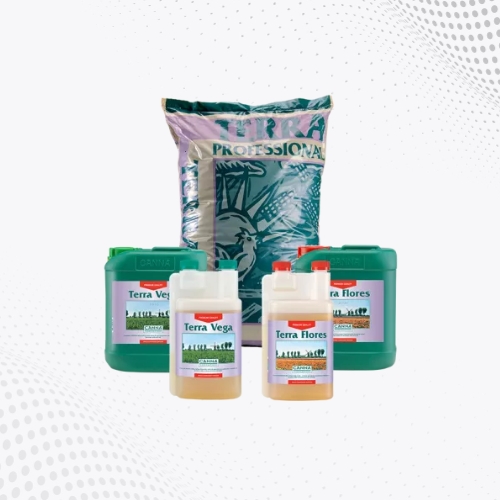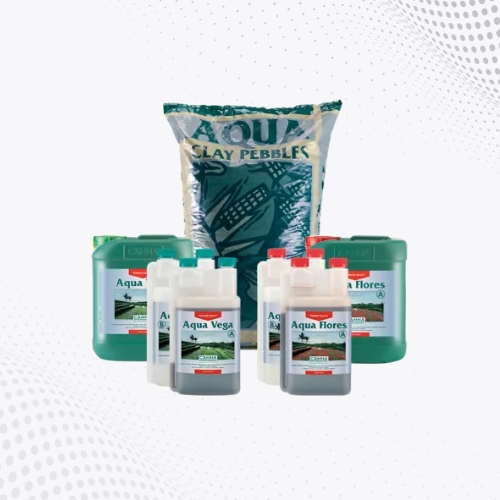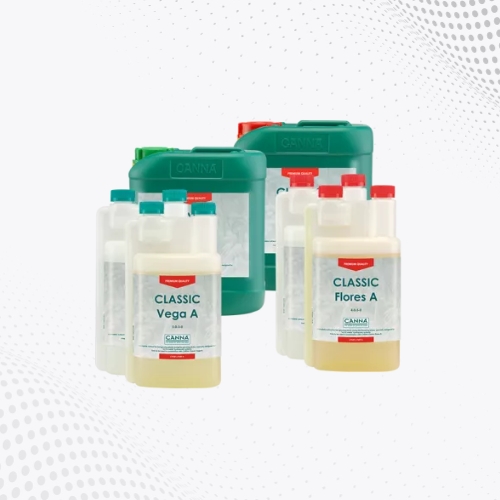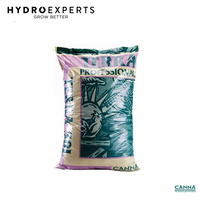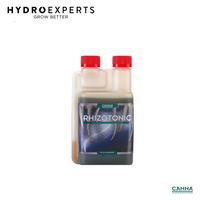Canna Nutrients: A Guide to Feeding Your Hydroponic Plants
By Hydro Experts | 1 April 2025
In the controlled environment of hydroponics, your plants' nutrition comes entirely from the solution you provide. Understanding how to properly feed your hydroponic plants is crucial for maximizing yields and quality. This guide explores the fundamentals of nutrient management for hydroponic systems in Australia's unique growing conditions.
Understanding the Hydroponic Advantage
Hydroponics offers precise control over your plants' feeding regimens. Unlike soil growing, where nutrients can be locked up or released unpredictably, hydroponics delivers nutrients directly to the root zone in a form plants can immediately utilize. This direct access translates to faster growth rates and potentially larger yields compared to traditional soil cultivation.
Australian growers face unique challenges. Our water quality varies dramatically across the continent, from highly mineralized in some regions to extraordinarily soft in others. This variability makes understanding your base water composition essential before adding nutrients.
Essential Nutrients for Hydroponic Success
Plants require 17 essential elements to thrive. These are categorized as follows:
Macronutrients (needed in larger quantities):
- Nitrogen (N): Drives vegetative growth and is crucial during the early and middle stages of plant development.
- Phosphorus (P): Essential for energy transfer, root development, and flowering.
- Potassium (K): Regulates metabolic processes and strengthens plants against stress.
- Calcium (Ca): Builds cell walls and helps plants resist heat stress—particularly important in Australia's climate.
- Magnesium (Mg): The central atom in chlorophyll, essential for photosynthesis.
- Sulfur (S): Important for protein synthesis and overall plant metabolism.
Micronutrients (needed in smaller amounts):
- Iron (Fe): Critical for chlorophyll production and many enzyme systems.
- Manganese (Mn): Activates enzymes involved in photosynthesis.
- Boron (B): Essential for cell wall formation and flowering.
- Zinc (Zn): Required for hormone production and enzyme function.
- Copper (Cu): Activates enzymes and plays a role in photosynthesis.
- Molybdenum (Mo): Vital for nitrogen utilization.
- Chlorine (Cl): Involved in photosynthesis and root development.
- Nickel (Ni): Required for nitrogen metabolism.
- Silicon (Si): While not universally recognized as essential, silicon strengthens cell walls and improves stress resistance—valuable in Australia's sometimes harsh conditions.
Tailoring Nutrients to Growth Stages
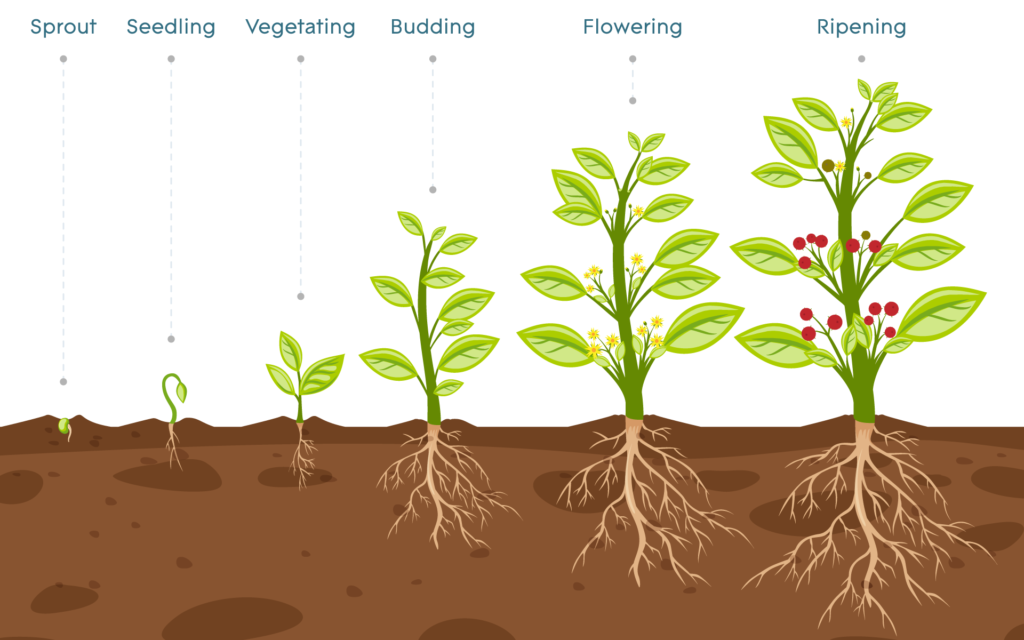
Plants have different nutritional requirements as they develop. A properly balanced feeding regimen addresses these changing needs:
Seedling/Cutting Stage
During this delicate phase, plants need minimal nutrition. Too much can damage tender roots. A mild nutrient solution with EC (electrical conductivity) around 0.5-0.8 mS/cm works best. Focus on:
- Lower nitrogen levels to avoid stretching
- Adequate phosphorus for root development
- Calcium and magnesium for structural development
Vegetative Stage
As plants establish themselves and build structure, they require increased nutrients, particularly nitrogen. Aim for an EC of 1.2-1.8 mS/cm, adjusting based on plant response. During this stage:
- Higher nitrogen drives leaf and stem growth
- Adequate potassium supports structure
- Calcium requirements increase as plants build cells rapidly
Transition to Flowering
The transition period is critical. Plants need:
- Reduced nitrogen to avoid excessive vegetative growth
- Increased phosphorus and potassium to prepare for flowering
- Steady calcium and magnesium to support structural integrity
Transition to Flowering
The transition period is critical. Plants need:
- Reduced nitrogen to avoid excessive vegetative growth
- Increased phosphorus and potassium to prepare for flowering
- Steady calcium and magnesium to support structural integrity
Flowering/Fruiting Stage
During flowering, plants prioritize reproductive growth. Adjust your nutrient solution to:
- Lower nitrogen levels
- Significantly higher phosphorus and potassium
- Continued calcium and magnesium supplementation
- EC levels are typically between 1.8-2.2 mS/cm for most varieties
Late Flowering/Ripening
As plants approach harvest:
- Further reduce nitrogen
- Maintain higher phosphorus and potassium
- Consider specialized ripening formulations
- Some growers perform a gradual EC reduction
Measuring and Monitoring Nutrient Solutions
Consistent monitoring is essential for hydroponic success. The two primary measurements are:
pH (Potential of Hydrogen)
pH affects nutrient availability. In hydroponics, maintain pH between 5.5-6.5, with 5.8-6.2 being ideal for most plants. Outside this range, certain nutrients become less available even if present in the solution.
Australian tap water often tends toward alkalinity in many regions, requiring pH adjustment. Regular testing is crucial, as pH naturally drifts as plants uptake nutrients.
EC (Electrical Conductivity)
EC measures the total dissolved salts in your solution, essentially indicating nutrient strength. Australian growers should:
- Start with testing source water EC
- Add nutrients incrementally while measuring
- Understand that higher ambient temperatures (common in Australia) may require lower EC values to prevent stress
- Adjust EC based on plant stage, strain, and environmental conditions
Hydroponic Systems and Nutrient Management
Hydroponic Systems & Their Key Considerations
Each hydroponic system has unique advantages, but getting the best results requires fine-tuning based on your setup and environment. Here's what you need to know:
Deep Water Culture (DWC)
DWC systems suspend plant roots directly in a nutrient-rich, oxygenated solution, making them one of the simplest hydroponic methods. However, water quality and aeration are crucial.
- Oxygen is everything – Use strong aeration (air stones or diffusers) to keep roots healthy, especially in hot Australian summers.
- Keep it cool – Water temperatures should stay between 18-22°C to prevent root rot and nutrient uptake issues.
- Fresh nutrients = healthy plants – Change the solution every 7-14 days to maintain balance and prevent algae buildup.
Nutrient Film Technique (NFT)
NFT continuously flows a thin film of nutrient solution over the roots, providing efficient feeding without waterlogging. However, it requires careful monitoring.
- Consistent flow = stable plants – Any interruptions can dry out roots quickly.
- Watch the numbers – EC and pH levels can fluctuate rapidly, so frequent monitoring is essential.
- Proper slope is key – A channel slope of 1:30 to 1:40 ensures good drainage and prevents pooling.
Drip Systems
Drip irrigation delivers a steady flow of nutrients directly to the plant’s roots, making it a versatile choice for various mediums.
- Choose the right dripper – Flow rate and frequency should match your grow medium’s water retention.
- Run-to-waste vs. recirculating – In water-scarce regions (like much of Australia), recirculating systems help conserve water, but run-to-waste setups reduce salt buildup.
- Drainage is non-negotiable – Without proper runoff, excess nutrients can accumulate and harm plant health.
Ebb & Flow (Flood & Drain)
This system periodically floods the grow bed before draining, allowing roots to absorb nutrients before being exposed to oxygen again.
- Flood timing matters – Adjust cycles based on medium type, plant size, and climate to prevent over- or under-watering.
- Drain completely – Stagnant water leads to root rot and disease, so full drainage between floods is essential.
- Adapt to the weather – Increase flood frequency during heatwaves to prevent roots from drying out too quickly.
Each system has its strengths, but the key to success is monitoring conditions and making small adjustments to keep plants thriving.
Common Nutrient Problems and Solutions
Nutrient Deficiencies
Recognizing deficiency symptoms early allows for prompt correction:
- Nitrogen: Older leaves yellowing from tip to stem
- Phosphorus: Dark green leaves with purple stems and margins
- Potassium: Brown leaf edges and weak stems
- Calcium: New growth appears stunted with brown/black spots
- Magnesium: Interveinal yellowing beginning on older leaves
Nutrient Lockout
Nutrient lockout occurs when plants cannot access nutrients due to chemical reactions or improper pH. To address:
- Maintain proper pH range
- Consider occasional "flush" with clean, pH-adjusted water
- Use quality nutrients formulated for hydroponics
- Monitor and adjust EC regularly
Nutrient Burn
Excessive nutrients can damage plants. Signs include:
- Leaf tips browning and curling
- Dark green leaves with "claw" appearance
- Slowed growth despite adequate conditions
If nutrient burn occurs, flush the system with clean, pH-adjusted water and restart with a more dilute nutrient solution.
Australian Water Considerations
Australia's water varies significantly by region:
- Hard water areas (parts of WA, SA, and QLD): May require less calcium and magnesium supplementation
- Soft water areas (parts of TAS and VIC): May need additional CalMag supplements
- Rainwater harvesting: Popular in rural areas, provides excellent base water but requires complete nutrient formulation
- Reverse osmosis systems: Consider for problem water sources but remember to add CalMag
Building a Feeding Schedule
A successful feeding schedule considers:
- Plant genetics and specific requirements
- Environmental conditions (temperature, humidity, light intensity)
- Water quality and system type
- Growth stage
Start conservative and increase nutrient strength gradually based on plant response. Document your process to refine your approach over successive grows.
Hydro Experts at Your Service
At Hydroexperts, we don't just sell products—we provide solutions backed by Australia's leading hydroponic cultivation experts. Our team combines decades of hands-on growing experience with scientific knowledge to help you achieve exceptional results.
Our Expert Consultation Services
Whether you're a beginner setting up your first system or a commercial grower optimizing for yields, our hydroponic specialists offer personalized support:
Water Analysis and Custom Feeding Plans
Send us your water sample, and our technicians will analyze its composition and design a customized feeding regimen tailored to your specific water profile and growing goals.
System Design and Optimization
Our engineers can review your current setup or help design your dream system from scratch, ensuring optimal nutrient delivery, environmental control, and energy efficiency.
Troubleshooting Clinics
Experiencing issues with your grow? Our diagnostic team can identify nutrient deficiencies, pH problems, or system inefficiencies through our virtual or in-person clinic sessions.
Commercial Grower Support
For larger operations, we offer comprehensive consultation services addressing nutrient management, system scaling, workflow optimization, and compliance considerations.
Visit any of our Australian locations in Sydney, Melbourne, Brisbane, Perth, and Adelaide to speak directly with our hydroponic specialists, or schedule an online consultation through our website.
Conclusion
Mastering hydroponic nutrition takes practice and observation. By understanding the fundamental principles outlined in this guide and adapting them to your specific conditions, you'll be well-equipped to provide optimal nutrition throughout your plants' lifecycle.
Remember that plants communicate their needs through visual cues and growth patterns. Learning to "read" your plants is perhaps the most valuable skill any hydroponic grower can develop. With consistent monitoring, appropriate adjustments, and quality nutrients, you'll be harvesting premium quality crops in no time.
Frequently Asked Questions
For recirculating systems, change the solution every 7–14 days based on plant density and growth stage. Larger reservoirs can go longer. Monitor EC and pH—significant drift means it's time to refresh. In warmer Australian regions, change more often in summer to prevent overheating.
In hot Australian summers, faster transpiration raises the risk of nutrient burn. Lower EC by 0.2–0.4 mS/cm when temperatures exceed 30°C. In cooler periods, plants tolerate stronger solutions—adjust gradually while monitoring response.
Nutrient needs stay the same, but your medium affects delivery. Inert media like clay pebbles and rockwool need frequent, small feedings, while absorbent media like coco coir require less. Coco binds calcium and magnesium, so extra supplementation helps. Our Canna Coco line is designed to meet these needs.
pH drift happens as plants absorb nutrients and release ions. Rapid shifts signal weak buffering, microbial activity (common in warm Australian conditions), or imbalanced nutrients. Our pH Buffer stabilizes pH, while Cannazym supports root zone microbial balance.
For consistency, use a complete nutrient system from one brand. Mixing brands can cause imbalances, precipitation, or nutrient antagonism. If using supplements from different sources, introduce them gradually and monitor plant response closely.

